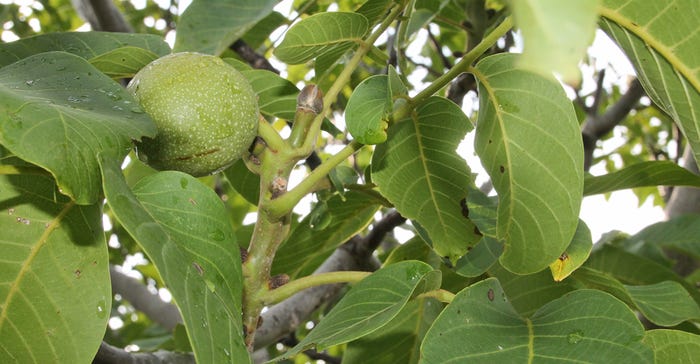January 15, 2019

CHESTNUT POTENTIAL: Chestnuts show some potential for being produced in large enough quantities for local sales.
Could tree nuts be a new local foods crop in the Dakotas? At least two people are trying to find out.
South Dakota nut trees
Darrell Ausborn, Yankton, S.D., has been experimenting with tree nuts for the past 10 years. He’s been planting hazelnuts, English walnuts, black walnuts, heartnuts, butternuts and Chinese chestnuts on a small acreage.
Establishing a small tree nut orchard was Ausborn’s strategy to remain physically and mentally active once he retired some 10 years ago.
“I looked for Zone 5 type nuts that would grow here,” Ausborn says. “To accommodate the soil conditions Chinese chestnuts need, I’ve had to add acid to the soil around those trees. Not everything I’ve tried has worked, and early spring freezes have affected my hazelnuts. I keep detailed records on all the trees and how weather and other environmental elements affect them. By trying different things and visiting with nut growers on tours and around this area, I keep learning.”
His initial tree plantings, coming from a Kentucky nursery, were completed in 2008. All were varieties developed by selective breeding. The first plantings were English walnut, black walnut, pecan, Chinese chestnut, heartnut and butternut. Hazelnuts planted in 2009 were purchased from a Minnesota nursery. In 2010, Ausborn planted walnut cultivars he found at a Canadian nursery. From 2011 through 2018, his plants came from various nurseries and locations.
“Depending on the tree species, some trees were ordered as seedlings and others as cultivars,” Ausborn says. “Some were replacement stock and others were for new sites. Around 2014, we started grafting pecan and/or hickory to pecan root stock to produce trees that will thrive here.”
Some years, some of Ausborn’s trees do not produce nuts.
“Some chestnut growers say the yield of seedling trees and cultivar trees are about the same,” Ausborn says. “Add the problem of delayed graft failure on cultivars, and planting seedlings may be an acceptable practice. However, harvest will be spread over a longer time frame with seedlings than cultivars.”
Ausborn’s orchard doesn’t produce enough nuts to sell, but he and his family enjoy annual harvests, primarily for their own use.
“The squirrels harvest their share, too,” Ausborn says. “We have quite a time getting nuts harvested before they do.”
North Dakota hazelnuts
Dan Johnson, Horace, N.D., also is experimenting with tree nuts. He has about two acres of hazelnuts where he grows about 350 plants. An electrician by trade, Johnson believes there is an emerging niche market for tree nuts produced in the Northern Plains. He’s been growing and developing hazelnut hybrids since 1978 in an effort to develop a thin-shelled, reasonably sized nut.
“There is a variety of wild hazelnut that’s native to the north,” Johnson says. “Since 1996, I’ve used that plant, crossing it with commercial hazelnut varieties, to develop a compact hybrid that thrives in this region. I sell hazelnut plants and a few nuts. People who purchase the plants from me seem to be happy with this hybrid.”
Johnson’s blogs about growing hazelnuts at riverbendhazelnuts.blogspot.com.
Sorensen writes from Yankton, S.D.
About the Author(s)
You May Also Like




